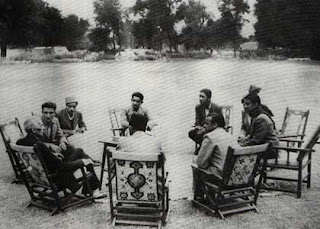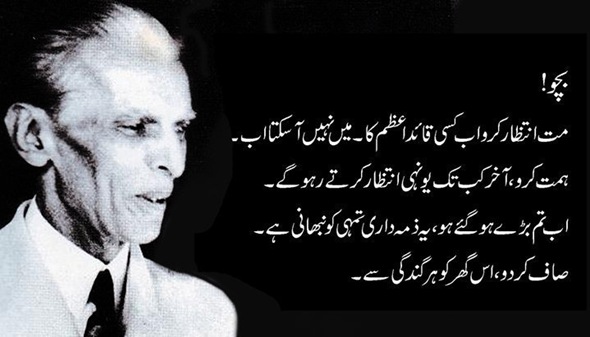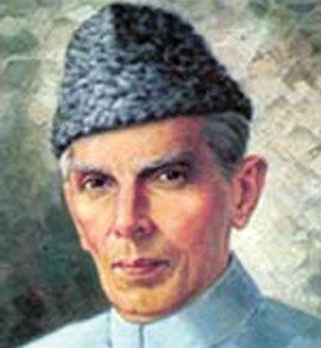23rd March 1940: What Our Youth Must Know About?
The Pakistani youth of today seem to be simply ignorant of the historical background of the creation of Pakistan. The reason is mostly to do with detest of theirs for Pakistan Studies while at schools. Based on my interaction with many of them, it is my considered opinion that there is a weakness and void out there amongst our youth vis- -vis history of Pakistan.
On this historic day of 23rd March 'also known as Pakistan Day' I therefore thought to write something for educating my youth on the significance of this day.
The youth of today must know that Pakistan owes her creation to four erstwhile outstanding Muslim leaders, namely: Sir Syed Ahmad Khan (1817-98), Maulana Mohammad Ali Jauhar (1878-1931), Quaid-e-Azam Mohammad Ali Jinnah (1876-1948), and Allama Muhammad Iqbal (1877-1938). These leaders provided intellectual and political leadership to Indian Muslims during about ninety years (1858-1947) of the British imperial rule on the Sub-continent.
It is important for them to also know that in the beginning all of these aforementioned leaders were thorough-bred nationalists at one time or another. By being nationalist means they were the proponents of a united India. Now it should not come as a surprise for our young men and women to learn that over the passage of time our leaders got disillusioned with this concept of one united India. The reasons were many. It could have been either because of Hindu ethnocentrism in the late 19th century or Congress`s championing of unitary Hindu nationalism in the 1920s and 1930s.
Now let us focus our discussion exclusively on our great leader and founder of Pakistan 'Quaid-e-Azam Mohammad Ali Jinnah'. It is very important for the youths to understand the elements of the crest and the troughs in the political leanings and ideologies of Quaid-e-Azam over his long career from 1904 thru 1948. It is interesting to note here that for some seventeen years (1904-1920), he was pro-Congress, pleading the Congress cause and envisioning a truly nationalist destiny for India.
And, still for another sixteen years (1921-37), though he was practically out of Congress as he had joined All India Muslim League in 1920, he was still working for a nationalist destiny. During this period, he was still striving for a Hindu-Muslim settlement and he was still collaborating with the Congress and its leadership for the same. It is also very well known that in pursuit of his mission of Hindu-Muslim unity, he had devised several constitutional formulae, but all to no avail. It is also pertinent to mention here that till early 1937, Quaid-e-Azam was still in his "nationalist" self; preaching his credo eloquently and trying miserably to unite Hindus, Muslims and Sikhs. For this he was widely known as the ambassador of Hindu-Muslim unity.
On this historic day of 23rd March 'also known as Pakistan Day' I therefore thought to write something for educating my youth on the significance of this day.
The youth of today must know that Pakistan owes her creation to four erstwhile outstanding Muslim leaders, namely: Sir Syed Ahmad Khan (1817-98), Maulana Mohammad Ali Jauhar (1878-1931), Quaid-e-Azam Mohammad Ali Jinnah (1876-1948), and Allama Muhammad Iqbal (1877-1938). These leaders provided intellectual and political leadership to Indian Muslims during about ninety years (1858-1947) of the British imperial rule on the Sub-continent.
It is important for them to also know that in the beginning all of these aforementioned leaders were thorough-bred nationalists at one time or another. By being nationalist means they were the proponents of a united India. Now it should not come as a surprise for our young men and women to learn that over the passage of time our leaders got disillusioned with this concept of one united India. The reasons were many. It could have been either because of Hindu ethnocentrism in the late 19th century or Congress`s championing of unitary Hindu nationalism in the 1920s and 1930s.
Now let us focus our discussion exclusively on our great leader and founder of Pakistan 'Quaid-e-Azam Mohammad Ali Jinnah'. It is very important for the youths to understand the elements of the crest and the troughs in the political leanings and ideologies of Quaid-e-Azam over his long career from 1904 thru 1948. It is interesting to note here that for some seventeen years (1904-1920), he was pro-Congress, pleading the Congress cause and envisioning a truly nationalist destiny for India.
And, still for another sixteen years (1921-37), though he was practically out of Congress as he had joined All India Muslim League in 1920, he was still working for a nationalist destiny. During this period, he was still striving for a Hindu-Muslim settlement and he was still collaborating with the Congress and its leadership for the same. It is also very well known that in pursuit of his mission of Hindu-Muslim unity, he had devised several constitutional formulae, but all to no avail. It is also pertinent to mention here that till early 1937, Quaid-e-Azam was still in his "nationalist" self; preaching his credo eloquently and trying miserably to unite Hindus, Muslims and Sikhs. For this he was widely known as the ambassador of Hindu-Muslim unity.
Quaid-e-Azam turned a dream into a reality
ON March 23, 1940, the Muslims of the sub-continent resolved to create a separate homeland, Pakistan. The decision was neither taken in haste nor precipitated by a sudden, dramatic turn of events.
Hindus and Muslims had lived in India for centuries but had remained two distinctly different cultural entities presenting marked dissimilarities that neither time nor assimilation could erase; they were like two streams running a parallel course. So manifest and so profound were the differences that the London Times, commenting on the Government of India Act of 1935, had to ungrudgingly concede: “Undoubtedly the difference between the Hindus and Muslims is not of religion in the strict sense of the word but also of laws and culture, that they may be said indeed to represent two entirely distinct and separate civilizations.”
This incontrovertible realization found a more convincing elucidation in the words of Quaid-e-Azam Muhammad Ali Jinnah: “Notwithstanding thousand years of close contact, nationalities which are as divergent today as ever, cannot at any time be expected to transform themselves into one nation merely by mean of subjecting them to a democratic constitution and holding them forcibly together by unnatural and artificial methods of British Parliamentary Statutes.”
The background of Pakistan Resolution is such that in 1937, provincial autonomy was introduced in the sub-continent under the Government of India Act, 1935. The elections of 1937 provided the Congress with a majority in six provinces, where Congress governments were formed. This led to the political, social, economic and cultural suppression of the Muslims in the Congress ruled provinces.
The Congress contemptuously rejected the Muslim League’s offer of forming coalition ministries. The Muslims were subjected not only to physical attacks but injustice and discriminatory treatment as regards civil liberties, economic measures and employment and educational opportunities. The Congress Ministries introduced the Wardha scheme of education, the object of which was to “de- Muslimize” the Muslim youth and children.
Ian Stephens, former editor of the newspaper “Statesman” and an eyewitness to the working of the Congress Ministries, says: "The effect of this simultaneously on many Muslim minds was of a lightning flash.
Hindus and Muslims had lived in India for centuries but had remained two distinctly different cultural entities presenting marked dissimilarities that neither time nor assimilation could erase; they were like two streams running a parallel course. So manifest and so profound were the differences that the London Times, commenting on the Government of India Act of 1935, had to ungrudgingly concede: “Undoubtedly the difference between the Hindus and Muslims is not of religion in the strict sense of the word but also of laws and culture, that they may be said indeed to represent two entirely distinct and separate civilizations.”
This incontrovertible realization found a more convincing elucidation in the words of Quaid-e-Azam Muhammad Ali Jinnah: “Notwithstanding thousand years of close contact, nationalities which are as divergent today as ever, cannot at any time be expected to transform themselves into one nation merely by mean of subjecting them to a democratic constitution and holding them forcibly together by unnatural and artificial methods of British Parliamentary Statutes.”
The background of Pakistan Resolution is such that in 1937, provincial autonomy was introduced in the sub-continent under the Government of India Act, 1935. The elections of 1937 provided the Congress with a majority in six provinces, where Congress governments were formed. This led to the political, social, economic and cultural suppression of the Muslims in the Congress ruled provinces.
The Congress contemptuously rejected the Muslim League’s offer of forming coalition ministries. The Muslims were subjected not only to physical attacks but injustice and discriminatory treatment as regards civil liberties, economic measures and employment and educational opportunities. The Congress Ministries introduced the Wardha scheme of education, the object of which was to “de- Muslimize” the Muslim youth and children.
Ian Stephens, former editor of the newspaper “Statesman” and an eyewitness to the working of the Congress Ministries, says: "The effect of this simultaneously on many Muslim minds was of a lightning flash.
‘The Quaid’ of the young nation
 |
| Quaid-e-Azam with a group of Quetta students |
Once, in April, 1945, the Quaid visited a school in Qalat, Balochistan, with his host, Khan of Qalat. As a little boy shook hands with him, the Quaid pointed towards the Khan of Qalat and asked this boy as to he was. The boy replied, “Our king”. Next Quaid-e-Azam inquired with the little boy about himself and asked whether the boy knew him. The boy answered, “you are our king’s guest”. Finally, the Quaid asked the boy to introduce himself. The boy said,” I am a Baloch”. At this point, the Quaid gestured towards the Khan of Qalat and earnestly requested him to tell children that they were first Muslims and later the rest of the identities.
Among Muslim League’s monumental problems at the threshold of independence was scarcity of resources as the young nation was all set to embark on the road to development. It was at a Muslim League crucial meeting at the Sindh Government House Karachi, attended by Ghulam Hussain Hiddayat, Chief Minister of Sindh and Shaheed Soharwardi, that the Quaid advised the young nation to practice austerity, economise resources and believe in the magical principle of self-help, self-reliance and self-actualisation.
The importance Quaid-e-Azam attached to the youth and the inspiration he provided them need no introduction. When, in 1941, Raja Ghazanfar Ali, the Quaid’s close aide and admirer and Sir Sikandar Hayyat, chief minister of Punjab, desired to meet the Quaid, who was then attending the annual congregation of Muslim Students’ Federation in Lahore, the Quaid politely refused to give them appointments and requested them to check for his schedule with the office-bearers of the MSF who were coordinating all his appointments during this period.
Subscribe to:
Posts (Atom)
Nations are born in the hearts of poets!!!
The poetry of Allama Iqbal was a breath of fresh air throughout Pakistan Movement... ...This is the historical and extremely memorable pic o...

-
Quaid-e-Azam addressing a group of students 1. My young friends, I look forward to you as the real makers of Pakistan, do not be exploit...
-
In 1913 the Quaid-i-Azam joined the All India Muslim League without abandoning the membership of the Congress of which he had been an active...






